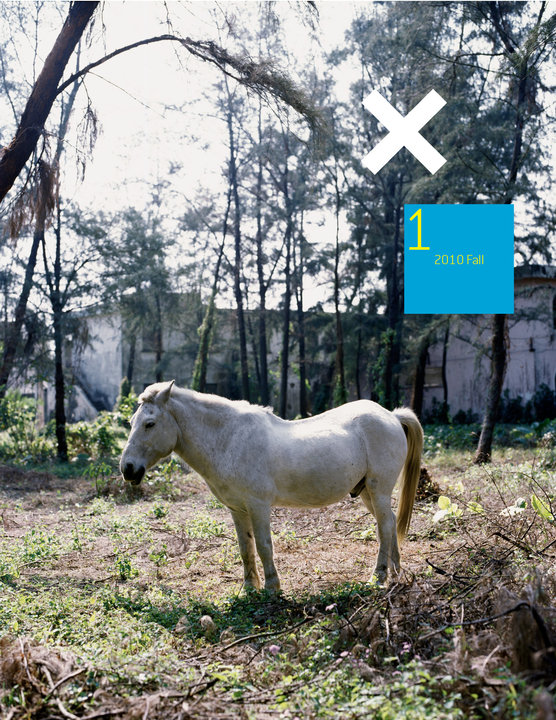X ZINE | 2010 Fall Issue
Admin 2010-08-28 19:37:37
In the book Cruel and Tender, Thomas Weski wrote, “ ... If, on the other hand, the photographer succeeds in penetrating more deeply into the object, then we can relish the realisation that what at first seemed familiar has been charged with additional meaning by the photographer’s perception and we can enjoy the sensation of being confronted with a form of autonomy that we recognise from the world of visual art.
Photographs of this kind do not simply confirm what we already know, but instead point to some difference between the photographer’s view of reality and our own. And the finer this difference, the greater its impact on us. What we then have before us is a representation of reality that not only reports on the object question but also formulates a worldview. On this basis, it is perfectly possible to talk of the photographer as an author who, by minimally shifting the perspective on certain facts, creates a narrative that is close to ‘real’ life...”
I still clearly remember my first critique class six years ago in Syracuse, when I showed the class a 23-foot-long strip of slides illuminated by fluorescence lights from the back, well framed and installed on one wall of the gallery. The slides represented a continuous scene of streets and houses from the place where I lived to the campus, the actual walking distance of which was 2.2 miles. I viewed the slides as a straightforward documentation of the empty city with endless scenes of slum houses, construction sites, empty streets and beautiful school buildings, thus I had a hard time explaining it --
"Where did you feel most comfortable when you were shooting the photographs?" Somebody asked.
"Under a bridge." I answered.
"Why?"
"I... don't know, I just feel so..."
"How do you like to... " "Have you read a book by... " "You should look at his work..." Many questions and comments were raised here and there. I felt very nervous explaining and communicating to people in a language that I didn’t feel confident expressing myself at that time. Nevertheless I survived my first critique.
Examining the presence through photographs is always my approach to unravel the emotions behind the images. The conversations between images and viewers will raise awareness, bring forth queries, create estrangement, and even result in disinterest and disconnection, because of the diversity of knowledge, experience, culture and consciousness.
I will be introducing young and emerging artists in each issue. In this first issue, we will meet Pixy (Liao, Yijun). Based in Brooklyn, New York, Pixy just finished her A-I-R (Artist In Residence) in Woodstock a month ago. One of her recent works is showcased here. For those who are interested in contributing to or being featured in the zine, please do not hesitate to send me your articles or samples of work with accompanying text.
With the honor of graduating from Syracuse University, I am also introducing Lightwork A-I-R in this issue. Lightwork started the A-I-R program in 1977 and has supported over 300 artists. Jeff Hoone, Director of Lightwork, said in the recent Contact Sheet, “... This process taught us two valuable lessons. One was the importance of relying on artists to recommend other artists, and the other was that if you let artists know that their voices will be heard you can create a program of inclusion that becomes a natural rules rather than a forced exception.”
The zine was created to serve as a platform to introduce young artists, whose specialized areas are not limited to photography, and to create a community therefrom for ongoing dialogues. In the meantime, I will unofficially release my own work here on a quarterly basis. With a hope of opening up conversations at the international level, the zine is in multiple languages. If you come across a language that you don’t recognize, don’t worry - image is the language without borders. Let’s start from there.
本期介绍的年轻艺术家是Pixy。在她网上教学的一期课程里提到“面无表情”的审美——“......我们对摄影师的情绪无法了解,无法依靠摄影师的观点来了解图像的意义。那么这里摄影的重 点,就是作为一种超越个人的角度限制,描绘管理人为和自然世界无形力量的观察方式。无表情摄影可能对它所描述的对象非常具体,但更主要的是在表面上的中立性和整体性的视点。”——或多或少与本期的影像志的定位相吻合。
有时候我很难把自己的摄影作品分类。既不好集成一个所谓的项目,也不属于什么系列。有些影像,放在一起确实有意思,有种不可言喻的思考。这期的影像,都是一些带着某种温和情绪的图像,既不快乐,也不悲伤,代表着某种角度的观察世界思维。
人,物,景,对于我来说都是一样的。都是一种实在的事物。有很多看得见摸得着的实物,过后就忘记了;有很多事物,凭着一种向往和无以到达却可以铭记于心。
Jiankun Xie
Aug 2010, Chicago
There is no comment on this article.





